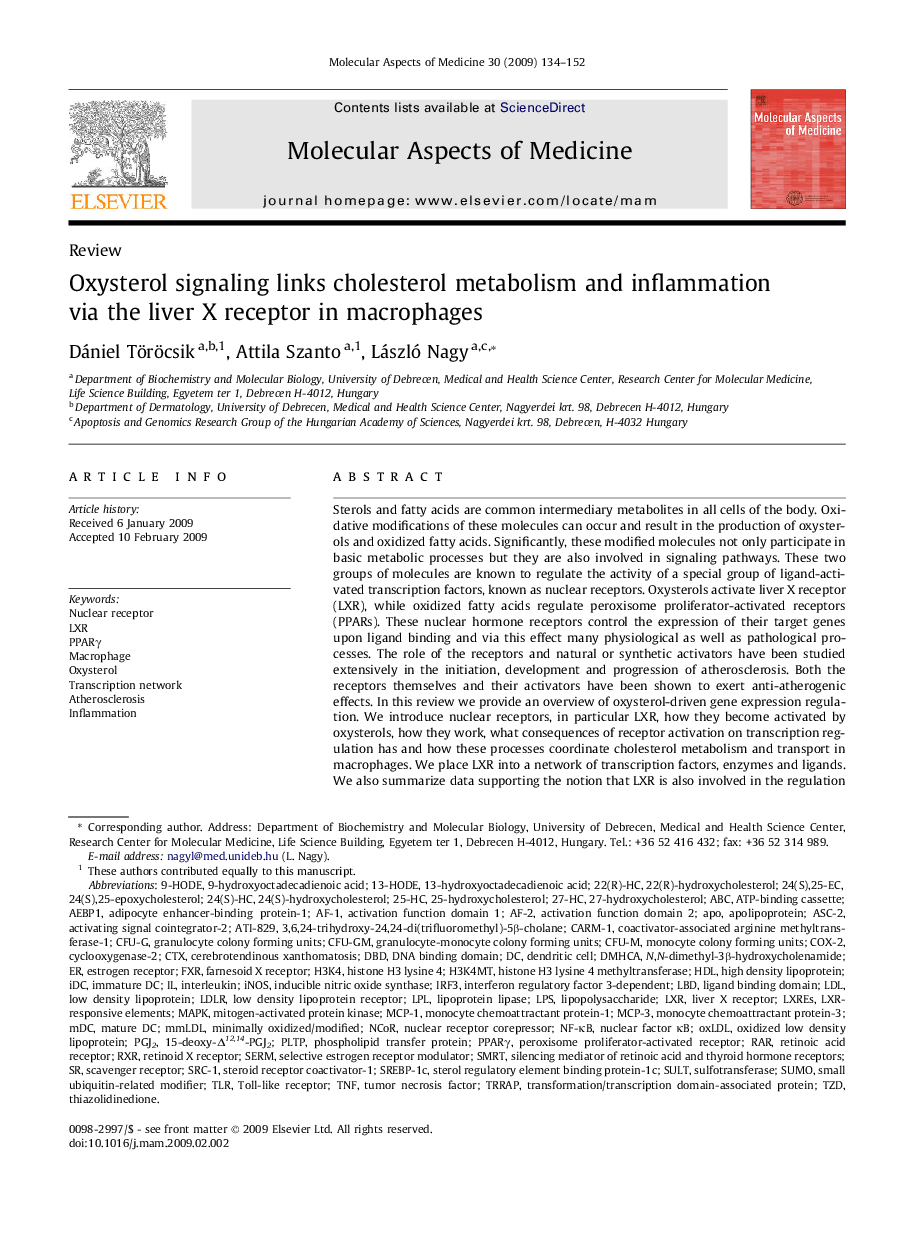| Article ID | Journal | Published Year | Pages | File Type |
|---|---|---|---|---|
| 1995915 | Molecular Aspects of Medicine | 2009 | 19 Pages |
Sterols and fatty acids are common intermediary metabolites in all cells of the body. Oxidative modifications of these molecules can occur and result in the production of oxysterols and oxidized fatty acids. Significantly, these modified molecules not only participate in basic metabolic processes but they are also involved in signaling pathways. These two groups of molecules are known to regulate the activity of a special group of ligand-activated transcription factors, known as nuclear receptors. Oxysterols activate liver X receptor (LXR), while oxidized fatty acids regulate peroxisome proliferator-activated receptors (PPARs). These nuclear hormone receptors control the expression of their target genes upon ligand binding and via this effect many physiological as well as pathological processes. The role of the receptors and natural or synthetic activators have been studied extensively in the initiation, development and progression of atherosclerosis. Both the receptors themselves and their activators have been shown to exert anti-atherogenic effects. In this review we provide an overview of oxysterol-driven gene expression regulation. We introduce nuclear receptors, in particular LXR, how they become activated by oxysterols, how they work, what consequences of receptor activation on transcription regulation has and how these processes coordinate cholesterol metabolism and transport in macrophages. We place LXR into a network of transcription factors, enzymes and ligands. We also summarize data supporting the notion that LXR is also involved in the regulation of inflammatory processes. Finally, the in vivo consequences of LXR activation or deletion are discussed.
